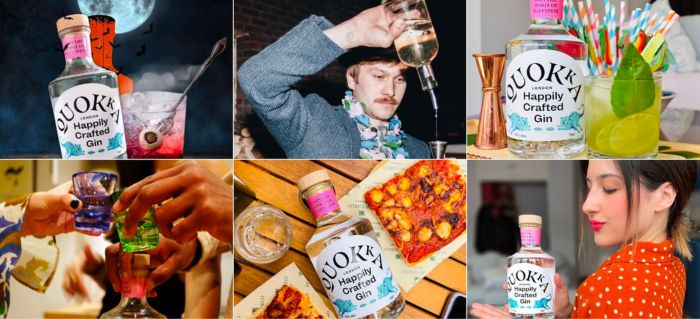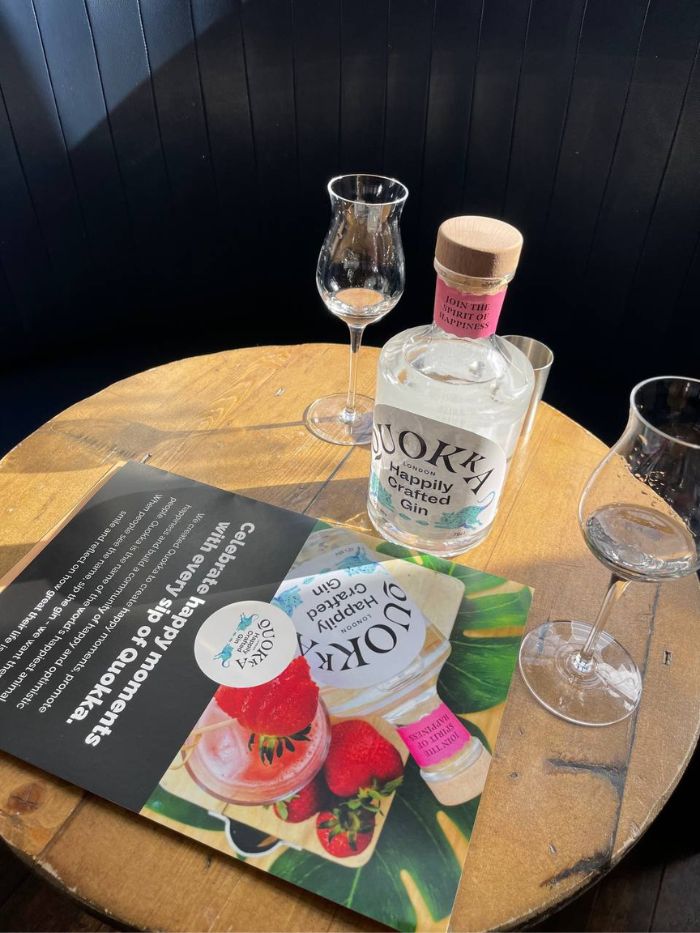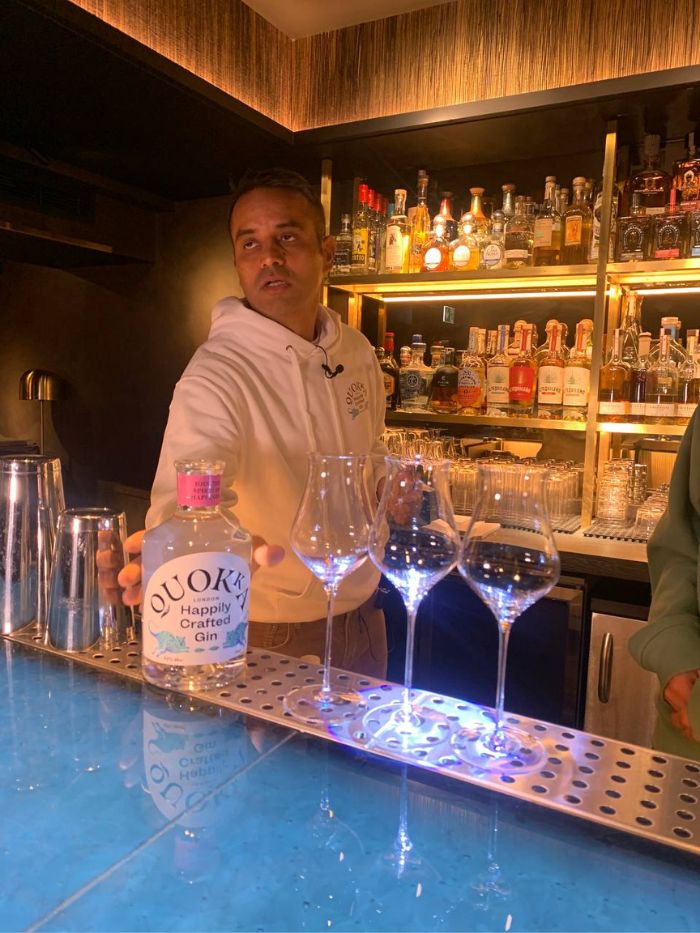Warehouse
Closed
July 10, 2025
Judging
Date
July 27, 2025
Winners
Announced
August 12, 2025

When you are launching a new brand, what you want to do is avoid the fanciness of buying 10 cases and getting one case for free or buying 15 cases and buying 2 cases for free, and so on; what you want to focus on is understanding the buyers. If it's a fine wine merchant or a restaurant, you just have to tell them that this is the deal you have in 3 cases, 5 cases and 10 cases, but for new accounts for first-time placement or first-time orders on your brand. Like, I will give you the best deal even in one case. So, use that for smaller accounts and to open new accounts for your brand.
If you are a big brand or store like Bini’s or a minimum 10000 sq ft store which does floor stacks, then, in this case, the person is looking for a case tech deal, or even if you are a new brand, it’s okay to ask for a case tech deal, you have to convince them that they are the influencers. You need them to build this brand in your state, so what you have to say is “ Hey... I need your support here, and please put my 10k stack there because I am launching the brand, and I need your attention. I will give you 50 percent, so give them a great deal, so you give them 2 cases on 10 or 3, depending on what is required and do your pricing. What they are looking for is the best deal from other retailers because their objective is to be a dollar cheaper, and they want a volume play with their consumers, so if someone is going to sell a 7.99 wine, what they want to do is sell at 6.99 and still make more money. Note, whenever you are selling 5-case, 10-case and 25-case stacks for the first time, make sure you do in-store tastings.
Allow your distributors, if you are selling three SKUs, allow them to mix and match and make a pallet of a purchase order so that they think it is okay if they put 20 cases of Merlot or 20 cases of Shiraz and 20 cases of Chardonnay and then that’s your 60 case stack. What you should do is understand your layers. For example, if your layer is 15 cases and has four layers, you would want to make a program for 60 cases. For distributors to retailers, allow them to mix and match cases for their first entry and give them a line price and the best deal.

Image Source: Instagram
Winning the sales reps' hearts and wallets is important for your brand to be well put and showcased in front of the retailers. They have to trust you to be a likable supplier, and you have to sell for them. You have to do amazing work in the market. Also, you have to give them incentives based on their selling potential.
You have to give them incentives based on their selling potential. You can tell them, “Hey, if you sell 100 cases of my wine this month, there is a fixed incentive.” You have to do programming in such a way that you have to tell your distributors that the programming is going 100 percent to the sales reps' pocket and not the distributors'.

There are new account incentives, having your distributors widen your brand. For example, selling 200 cases is one thing but selling 200 cases in 80 accounts is another, so you have to go wide. For example, if you open 80 accounts for my product, here’s its incentive.
If you give me 10 stores with 10 case displays, this is an incentive for you.
Have 10-15 retailers for your wine brand, where you have the case tax and rapport with the wine reps or the retail stores' sales rep, and then give them Visa or Amex cards. So, if you tell them annually or monthly that if you sell 50 cases of my wine, here’s a 500-dollar visa card for you. You can also tell your retailer or distributor that this is how you plan to reward a store-level person selling your product.
Designing around the depletion rate, focusing the entire supply chain on the depletion rate.
Watch, Types of Deals and Programming Needed in the Trade to Build a Solid Brand to understand better.
In continuation, here are the programs I recommend for distributors.
Developing ‘Distributor Programs’ is now an essential step to differentiate your brand(s) from the massive pool of suppliers.
We would also like to suggest bundling price programming with the support that you offer for your brand to your wholesalers/ distributors. We would advise suppliers to include a support plan when sending the price list too (and more importantly sticking to the plan).
A distributor who has been in business for long appreciates the commitment and willingness shown by the supplier irrespective of the sales and that can turn into sales even if you had a slow start. Most suppliers give up on brands that don’t do well in the first round of retail tastings and so does the distributor.
[[relatedPurchasesItems-54]]
Plan a distributor sales meeting at the distributor’s workplace. Invite all the sales representatives. Bring sell sheets, and samples and be prepared. Don’t give a long speech about your winery or brewery and how great your company is. Focus more on key selling points and give them the best 2-minute sales pitch they can give to their retailers. Here is an example:
John: I wanted to show you the new Malbec we have, it has 91 points from Wine Spectator and is made by a 100-plus-year-old winery that has been making organic wines since the beginning. It also has a great price on it.

Work in the market with sales reps and show them that your product sells. Listen to the objections that you get from retailers and try turning them around. A LOT depends on your sales representative’s relationship with their customer too. Being in the market with a representative gets you direct feedback. Offer your wholesalers at least 4 days of market work - 2 days at a time, 2 times a year. We would say the 1st week of March is good when things start to pick up again after the holidays and then the 1st week of October is good before it’s too late for the holiday season.
It is always good to award sales reps who are selling your brand. Most of the time you can share sales incentives with a distributor. Something like $5 from you and $5 from your wholesaler works well, making it $10 per case on all depletions. Offer incentives for a month about twice a year.
Yes, you may feel that it’s overhead, but selling never stops. Once your brands are in stores, you have to worry about how you can move them. Your retailers must sell through. POS is the cheapest sales representative you can hire. Small things like case cards and shelf talkers are enough and colored cartons always help. It also makes it easy for retailers to locate your brand in their storage stockpile.
As mentioned in point 4, selling never stops. You have to put your juice in the end consumer’s mouth. Offer deals to retailers if they buy more quantity. When you are doing market work, offering tastings support on your new placements will help. A 1-hour tasting will set you back about $50. Have a minimum quantity to qualify like a 5-case order or similar.
It is OK if you don’t have the budget for it, but when pitching to chains, or even on-premise accounts, a merchandising budget is key. Case racks for a chain is a big selling point and covering the cost to reprint menus is also a good offering to get your brands featured by on-premise accounts.
On-premise accounts may look like a slow sale but the more on-premise accounts you have and the more house wine specials you are under, the more regular your purchase orders will come from your distributors. On-Premise will also work to spread word of mouth for your brand.
Most of the time, you have to treat off-premise and on-premise accounts differently. For example, if you are offering a retailer 1 case on a 10-case deal, 2 bottles on a case for a new restaurant can do the work. You may run such deals once or twice a year, as required to ensure you.
Kick-off Meeting and Market work – 1 week (first week).
Sales incentive month: Hold this in the month following market work.
Follow this up with 2-3 months of no incentives. Focus on point-of-sale and trade tastings and also in-store tastings.
Quantity Discounts: offer these for a month. March and October are good months for deep deals as retailers are just starting to get ready.
Market work: Your second session with the sales team should be around the holiday season (October).
Following the above pattern in the first few years is a good idea. Once your brand is in 50% of the distributor’s accounts (retailers), one can look into consumer advertising or more trade tastings. After you get your placements, the focus is to make the ordering cycle ‘automatic.’
An Important Note: If you don’t have the margins in your brand to support the above ADD THEM into your pricing, but never tell your distributor you don’t have money to offer promotional support. Don’t discount your brand, try selling with good margins if you are trying to build a brand as the market will force you to give deals and offer more promotional support as you grow.
The 2025 Winners List is Now Live! Explore the Full List!